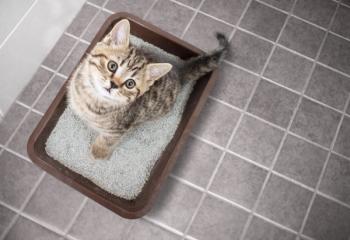Every cat in the home needs their own space, including where they are eating. If the client's home allows it, have them set up feeding stations in separate rooms within the house. This will help the pets not fight over resources and pets with eating anxiety who prefer to eat alone or at a time when the other cats are not around. If the client's house is not big enough to accommodate pets eating in separate rooms, have the food bowls be far away from each other with the cats not facing each other. To help better understand the situation your clients are dealing with, Carozza told attendees to start by having an open and honest conversation with them.
“Ask them open-ended questions to get more information from them. Can your cats eat in a safe place? Can you separate them? Especially if they're not part of the cat family. Because you will always have that one outsider in a home that's not getting along. Can you provide multiple and separated key resources? Can you create food stations for them in multiple locations in the house? Can you provide them with the opportunity to actually hunt for their food?” asked Carozza.
“Cats really need to have some sort of enrichment. They get bored, they get sedentary, and they become obese. We want to make sure that we're enriching their lives and the easiest way to do it is with food. Food is a reward,” she concluded.
Carozza also told attendees that it is great to keep feline patients on a feeding schedule because they like the consistency. She even shared about her own cat who, like others, will escort her to the kitchen when it is time to eat. Once clients create a routine, they need to respect it. She also offered a tip that if the client is struggling with the cats waking them up early in the morning for feedings, even if it is not the scheduled time, adjusting their dinner schedule to later on in the night can help combat this reaction.
The 5 pillars of a healthy feline environment:2
- Pillar 1: Provide a safe place.
- Pillar 2: Provide multiple and separated key environmental resources: food, water, toileting areas, scratching areas, play areas, and resting or sleeping areas.
- Pillar 3: Provide opportunity for play and predatory behavior.
- Pillar 4: Provide positive, consistent, and predictable human-cat interaction.
- Pillar 5: Provide an environment that respects the importance of the cat’s sense of smell.
Alternative places to eat
If pet owners are struggling with separating their cats during meals, there are alternatives they can use to help give pets the space they need. For example, she mentioned box feeding stations. Although some have problems, such as only one entrance or see-through, she said they could be a safe space for kittens in a house with an older cat.
“In a lot of homes, this is a great way to feed your kittens, especially if we have an older cat in the house that loves to eat kitten food—and they all love to eat kitten food—and you don't want them to have access to the kitten food,” explained Carozza. “You can feed your kittens in the closed feeding stations. It’s wonderful, especially if you only have to cut out [a space] big enough for the kittens to go in and out and the big cat can't even get an arm in there and try to pull everything out. [A closed feeding station] does provide a safe enough space for them."
If the closed feeding stations are not for your client's cats, Carozza also suggested trying a multi-tier feeding structure. Each pet can have its own level giving them a chance for enrichment by climbing up the structure to get their meals.
Takeaways
If your clients are struggling with their cats, having an honest conversation with them can help get them the support they need to succeed. Educating them on their options and listening to their concerns can help them remember they can do this. Carozza also encouraged veterinary professionals to share their wins and losses with their own pets to help relate to the client, letting them know that they are in this together and will help them get their loved pets the food they need.
References
- Carozza E. Chew With Your Mouth Closed! Preventing Food Phobias & Fighting at the Dinner Table in the Multi-cat Household. Presented at: 2023 American Association of Feline Practitioners Conference, Memphis, Tennessee. October 13-15, 2023.
- Ellis SLH, Rodan I, Carney HC, et al. AAFP and ISFM feline environmental needs Guidelines. J Feline Med Surg. 2013;15(3):219-230. doi:10.1177/1098612x13477537






